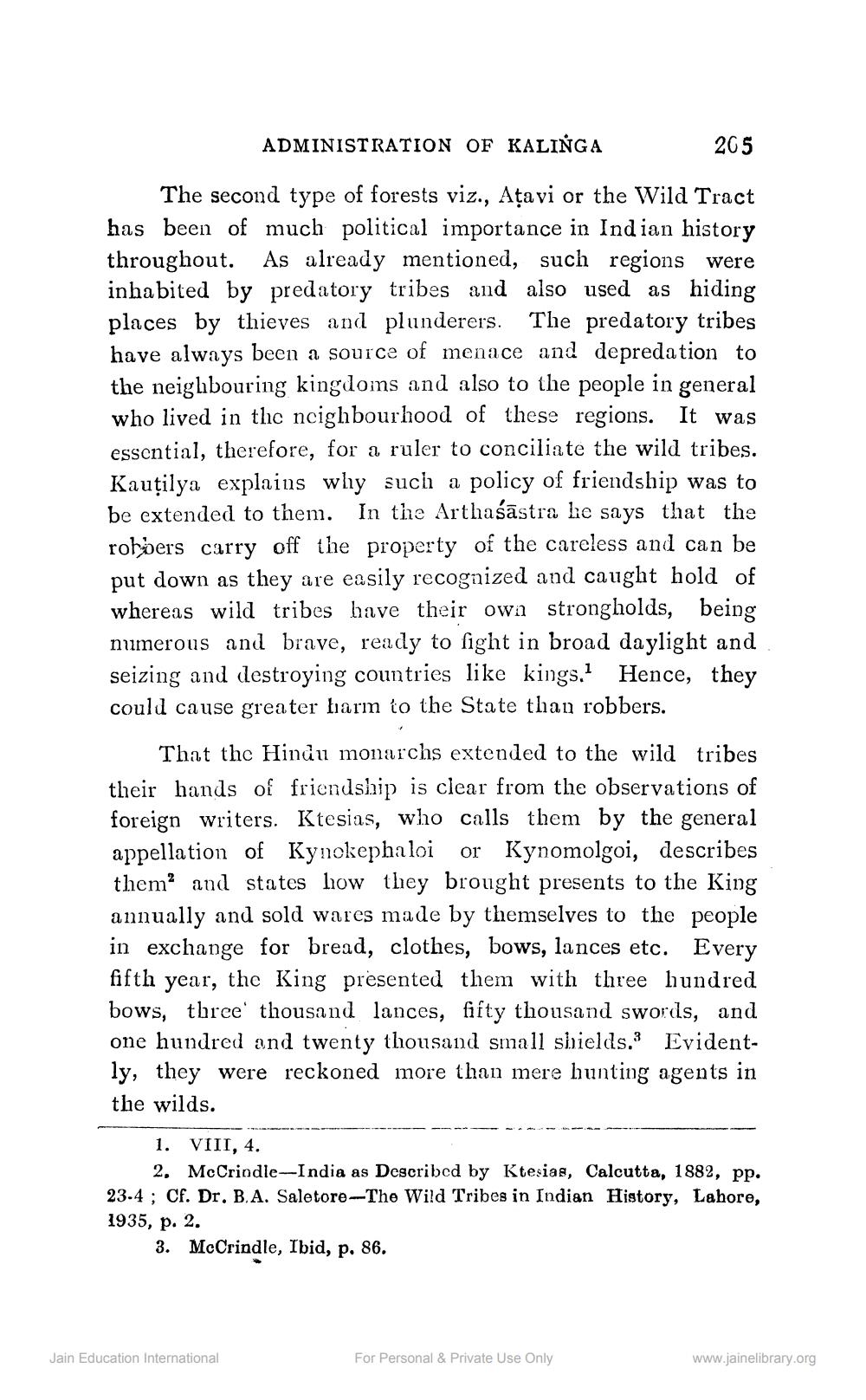________________
ADMINISTRATION OF KALINGA
205 The second type of forests viz., Ațavi or the Wild Tract has been of much political importance in Indian history throughout. As already mentioned, such regions were inhabited by predatory tribes and also used as hiding places by thieves and plunderers. The predatory tribes have always been a source of menace and depredation to the neighbouring kingdoms and also to the people in general who lived in the neighbourhood of these regions. It was essential, therefore, for a ruler to conciliate the wild tribes. Kautilya explains wliy such a policy of friendship was to be extended to them. In the Arthaśāstra he says that the robbers carry off the property of the careless and can be put down as they are easily recognized and caught hold of whereas wild tribes have their own strongholds, being numerous and brave, ready to fight in broad daylight and seizing and destroying countries like kings. Hence, they could cause greater harm to the State than robbers.
That the Hindu monarchs extended to the wild tribes their hands of friendship is clear from the observations of foreign writers. Ktesias, who calls them by the general appellation of Kynokephaloi or Kynomolgoi, describes them? and states how they brought presents to the King annually and sold wares made by themselves to the people in exchange for bread, clothes, bows, lances etc. Every fifth year, the King presented them with three hundred bows, three thousand lances, fifty thousand swords, and one hundred and twenty thousand small shields. Evidently, they were reckoned more than mere hunting agents in the wilds.
4.
1. VIII, 4.
2. McCrindle-India as Described by Ktesias, Calcutta, 1882. pp. 23.4 ; Cf. Dr. B.A. Saletore--The Wild Tribes in Indian History, Lahore, 1935, p. 2.
3. McCrindle, Ibid, p. 86.
Jain Education International
For Personal & Private Use Only
www.jainelibrary.org




